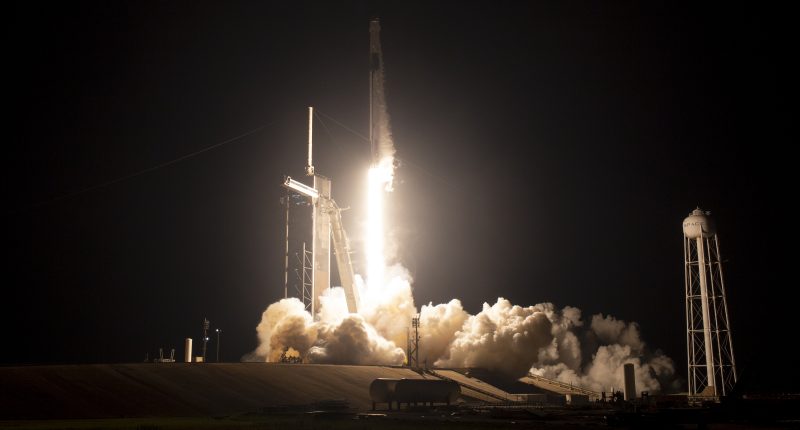SpaceX has successfully launched a four-man crew to orbit on a trip to the International Space Station (ISS). The launch occurred in the early hours of Thursday when the launch vehicle blasted off at 12:34 AM EST from NASA’s Kennedy Space Center in Cape Canaveral, Florida.
“Congratulations to the NASA and SpaceX teams for another history-making mission to the International Space Station! The Commercial Crew Program is proof American ingenuity and leadership in space benefits all of humanity – through ground-breaking science, innovative technology, and newfound partnership,” NASA Administrator Bill Nelson commented on the matter. The mission marks the latest – and sixth – long-term ISS team flown to space by NASA via SpaceX, and the ninth overall crewed flight for Elon Musk’s space company.
“Crew-6 will be busy aboard the International Space Station, conducting over 200 experiments that will help us to prepare for missions to the Moon, Mars, and beyond, as well as improve life here on Earth. We look forward to seeing all that they accomplish,” he added.
The successful lift-off and flight came 72 hours after the initial launch attempt had to be aborted on Monday due to a blockage in the flow of engine-ignition fluid. NASA later said that it had fixed the issue. Nine minutes after achieving lift-off, the lower-stage Falcon booster returned to Earth, landing on the recovery vehicle “Just Read the Instructions” in the Atlantic.
The space vehicle chosen for the launch of the Crew-6 mission was a 25-story-tall Falcon 9 rocket (which boasts 9 Merlin engines), which was topped with an autonomously operated Crew Dragon capsule called Endeavour. According to an official release by NASA, the Dragon capsule is slated to reach the ISS and dock at the port in a little over 24 hours – 1:17 AM on March 3, to be precise.
Currently in orbit and en route to the ISS, the Crew-6 mission consists of NASA astronauts Stephen Bowen and Warren Hoburg, along with Sultan Alneyadi (an astronaut from UAE and the second person from his country to fly to space), and Roscosmos cosmonaut Andrey Fedyaev. Bowen, a one-time U.S. Navy submarine officer and veteran of three Space Shuttle flights and seven spacewalks, leads the crew.
Once the Crew 6 team successfully reaches the ISS, they will meet the current occupants of the space station. At present, it consists of 3 NASA astronauts – Frank Rubio, Nicole Mann (the first Native American woman to fly to space), and Josh Cassada – as well as Japanese astronaut Koichi Wakata, and Roscosmos cosmonauts Sergey Prokopyev, Dmitri Petelin, and Anna Kikina.
“For more than two decades, humans have continuously lived and worked aboard the International Space Station,” said Kathryn Lueders, associate administrator for NASA’s Space Operations Mission Directorate in Washington. “Commercial Crew Program missions like Crew-6 are essential so we can continue to maximize the important research possible only in the space station’s unique microgravity environment. Congratulations to the NASA and SpaceX teams on a successful launch! I am looking forward to seeing the crew safely aboard the station.”
